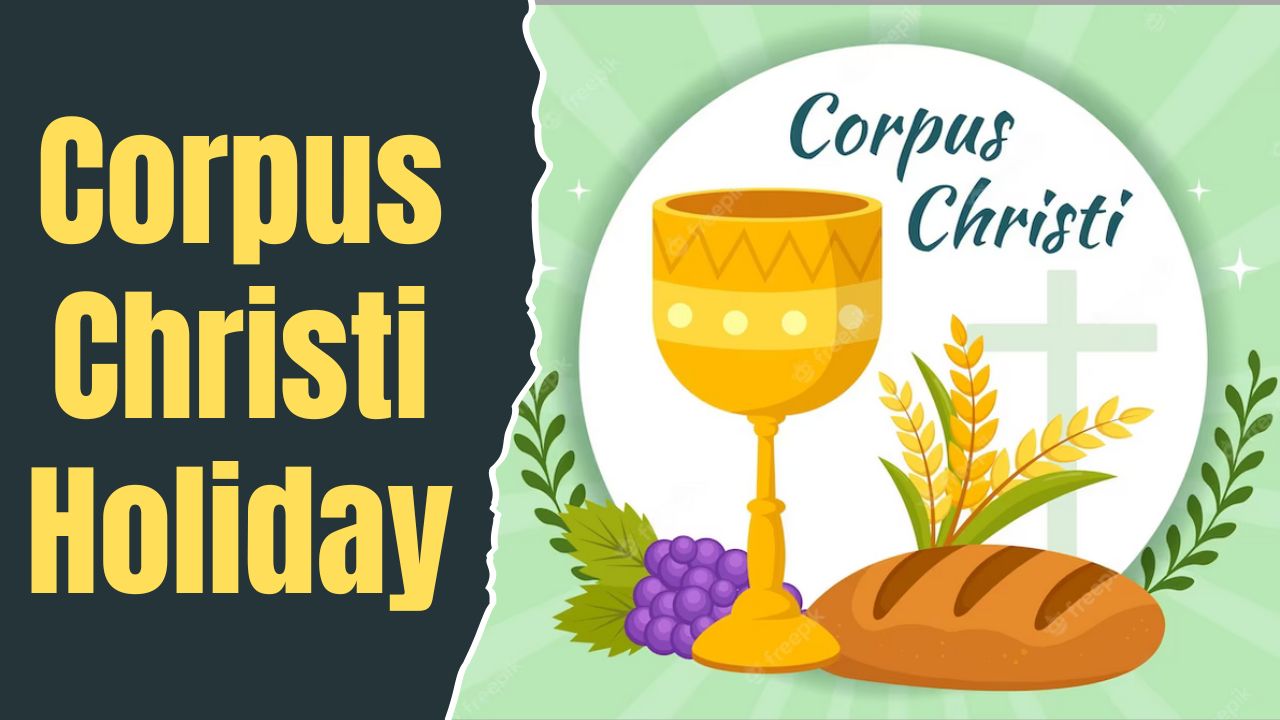Corpus Christi Holiday: Exploring the Vibrant Celebration and Rich Traditions
Introduction
Corpus Christi Holiday is an annual celebration that holds significant cultural and religious importance in various parts of the world. Derived from Latin, “Corpus Christi” translates to “Body of Christ.” This holiday commemorates the presence of the body and blood of Jesus Christ in the Holy Eucharist, as observed by the Catholic Church. With its origins dating back to the 13th century, Corpus Christi Holiday has evolved into a joyous occasion filled with religious processions, festive traditions, and community gatherings. In this article, we will delve into the fascinating history, customs, and experiences associated with Corpus Christi Holiday.
Corpus Christi Holiday: A Historic Overview
Corpus Christi Holiday traces its roots to the 13th century, when Juliana of Liège, a Belgian nun, experienced a series of visions emphasizing the need for a feast honoring the Holy Eucharist. Inspired by these visions, Juliana advocated for the establishment of a special day to commemorate the real presence of Christ in the Eucharist. Eventually, in 1264, Pope Urban IV declared Corpus Christi as a universal feast for the Roman Catholic Church.
The Significance of Corpus Christi Holiday
Corpus Christi Holiday holds profound religious significance for Catholics worldwide. It serves as a moment to reflect on the doctrine of transubstantiation, which teaches that the bread and wine used in the Eucharist become the actual body and blood of Christ. During this holiday, the faithful express their devotion and gratitude through prayer, processions, and acts of worship. Corpus Christi Holiday is also an opportunity for communities to come together and celebrate their shared faith.
Celebrating Corpus Christi Holiday: Customs and Traditions
1. Elaborate Processions: A Visual Spectacle
Corpus Christi processions are the hallmark of this holiday. Communities gather to witness and participate in grand processions, where the Blessed Sacrament is carried through the streets in a beautifully adorned vessel known as a monstrance. Elaborate decorations, floral carpets, and religious banners further enhance the visual spectacle, creating a vibrant atmosphere of reverence and joy.
2. Floral Displays: Nature’s Tribute
Flowers play a significant role in Corpus Christi celebrations, symbolizing the beauty and purity of the Eucharist. Intricate floral carpets, known as “alfombras,” are meticulously created along the procession route. These colorful masterpieces are composed of flower petals, leaves, and sawdust, meticulously arranged to form intricate patterns, religious symbols, and messages of devotion.
3. Eucharistic Adoration: Moments of Reverence
Eucharistic adoration is a central aspect of Corpus Christi Holiday. Devotees gather in churches and chapels to spend time in quiet contemplation and prayer before the Blessed Sacrament. This period of adoration provides an opportunity for personal reflection and spiritual connection with the divine.
4. Church Services and Masses: Sacred Gatherings
Corpus Christi Holiday is marked by special church services and Masses dedicated to the celebration of the Eucharist. These services emphasize the solemnity and importance of the occasion, with priests delivering sermons focused on the significance of the Holy Eucharist in Catholic theology.
5. Feast and Festivities: Community Bonding
Following the religious observances, Corpus Christi Holiday often culminates in festive gatherings and communal meals. Families and friends come together to share in the joyous spirit of the occasion, strengthening their bonds and fostering a sense of unity within the community.
FAQs about Corpus Christi Holiday
1. What is the origin of Corpus Christi Holiday?
Corpus Christi Holiday originated in the 13th century when Juliana of Liège had visions calling for a feast to honor the Holy Eucharist. Pope Urban IV declared Corpus Christi as a universal feast for the Catholic Church in 1264.
2. How is Corpus Christi Holiday celebrated?
Corpus Christi Holiday is celebrated through elaborate processions, floral displays, Eucharistic adoration, special church services, and festive gatherings.
3. Which countries celebrate Corpus Christi Holiday?
Corpus Christi Holiday is celebrated in various countries, including Spain, Portugal, Italy, Austria, Germany, and some regions of Latin America.
4. What is the significance of the Corpus Christi procession?
The Corpus Christi procession is a symbolic representation of the faithful walking with Christ and publicly proclaiming their devotion to the Eucharist.
5. What are floral carpets (alfombras) in Corpus Christi celebrations?
Floral carpets, or alfombras, are elaborate arrangements of flower petals, leaves, and sawdust, carefully crafted along the procession route as a tribute to the Eucharist.
6. How does Corpus Christi Holiday promote community bonding?
Corpus Christi Holiday brings communities together through shared religious practices, processions, and festive gatherings, fostering a sense of unity and communal spirit.
Conclusion
Corpus Christi Holiday is an enchanting celebration that unites communities in faith and devotion. From the elaborate processions to the breathtaking floral displays and moments of solemn reflection, this holiday offers a unique experience for both participants and spectators. As the Blessed Sacrament is revered and honored, the profound significance of the Holy Eucharist is brought to life through vibrant traditions and expressions of faith. Corpus Christi Holiday serves as a reminder of the enduring spiritual connection between believers and the body of Christ.
